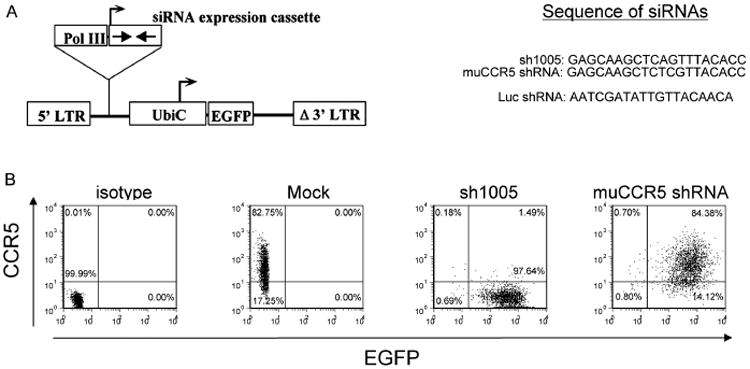Figure 1.

CCR5 shRNA can specifically reduce the cell surface expression of CCR5 in CCR5-293T cells. (A) Schematic diagram of the siRNA-expressing lentiviral vector. The shRNA is expressed under the control of a human H1-RNA Pol III promoter (Pol III). The vector also contains a human ubiquitin C promoter (UbiC) driving the EGFP marker gene for tracking transduced cells. (B) CCR5-293T cells (1 × 105) were transduced with lentiviral vectors encoding CCR5 shRNA 1005 (sh1005) or the mutant CCR5 shRNA (muCCR5 shRNA). The cells were harvested 2 days after virus transduction and analysed by flow cytometry with PE-Cy5 conjugated anti-human CCR5 or isotype control antibody staining (isotype). The transduced (EGFP+) and nontransduced (EGFP−) cells were gated based upon their EGFP expression. The number in each quadrant represents the percentage in each population
